

Marble House
a Newport, Rhode Island "cottage"
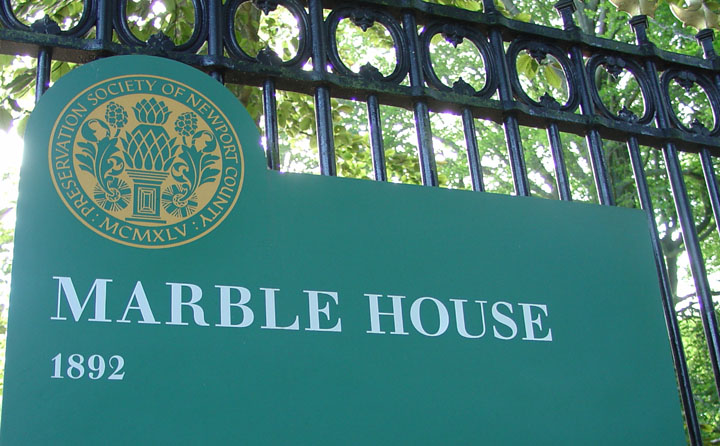
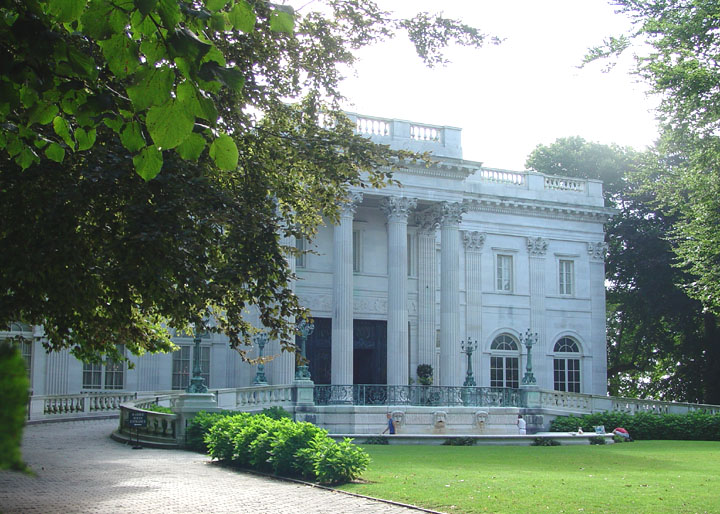
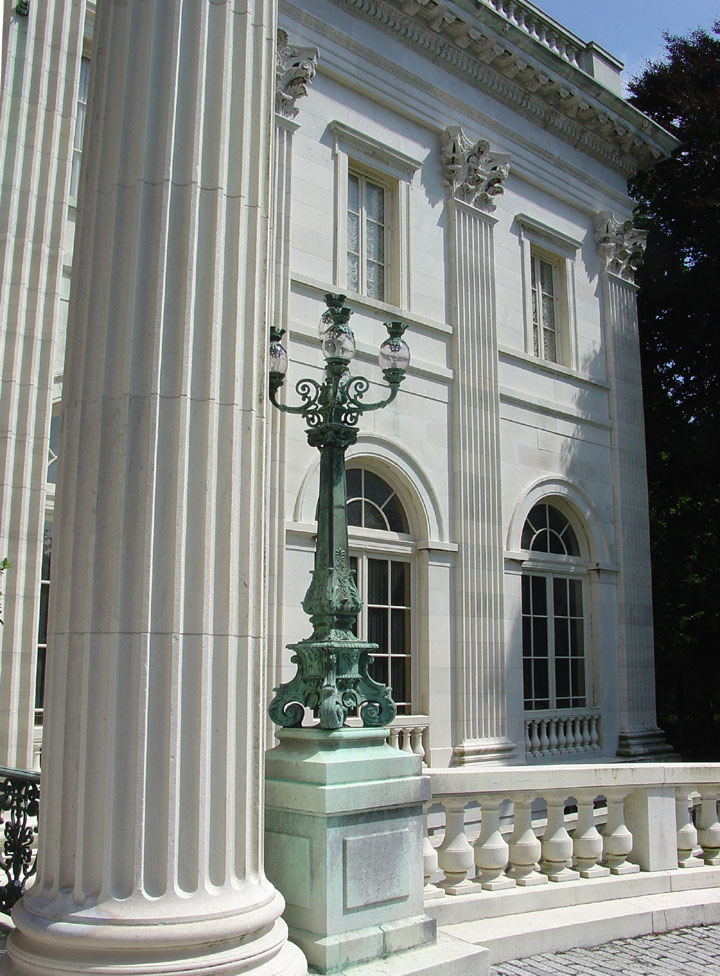
Marble House was built between 1888
and 1892 for Mr. and Mrs. William K. Vanderbilt, a summer house, or "cottage",
as Newporters called them in remembrance of the modest houses of the early 19th
century. But Marble House was much more; it was a social and architectural
landmark that set the pace for Newport's subsequent transformation from a quiet
summer colony of wooden houses to the legendary resort of opulent stone
palaces.
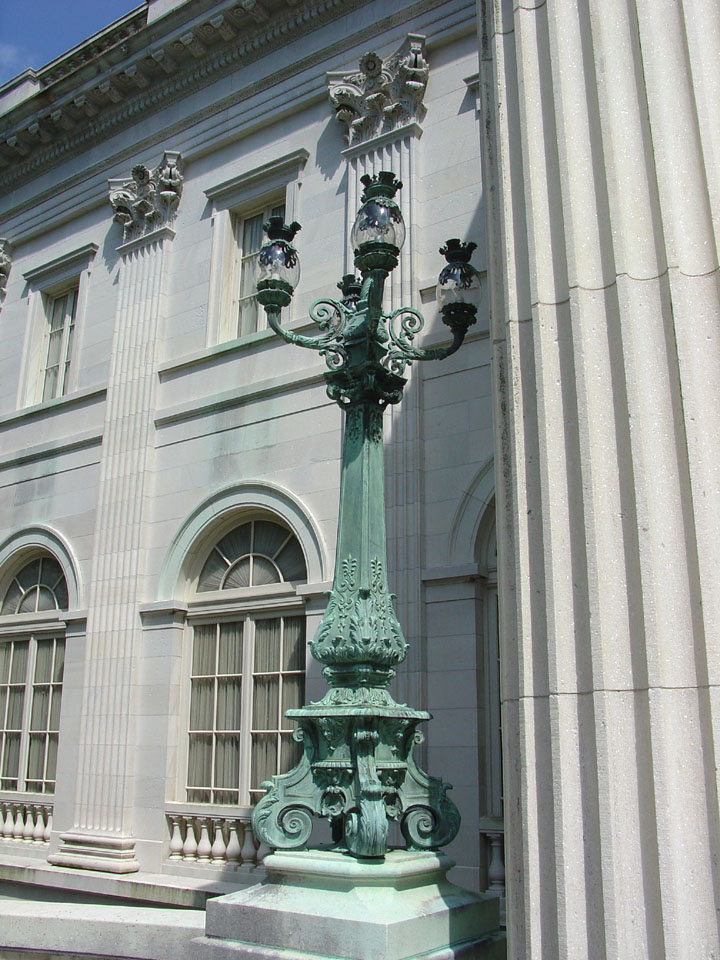
Mr. Vanderbilt was the grandson of
Commodore Cornelius Vanderbilt, who established the family's fortune in
steamships and the New York Central Railroad. His older brother was Cornelius
II, who built The Breakers. Alva Vanderbilt was a leading hostess in Newport
society, and envisioned Marble House as her "temple to the arts" in America. It
was designed by the architect Richard Morris Hunt, inspired by the Petit Trianon
at Versailles. The cost of the house was reported in contemporary press accounts
to be $11 million, of which $7 million was spent on 500,000 cubic feet of
marble. Upon its completion, Mr. Vanderbilt gave the house to his wife as a 39th
birthday present.
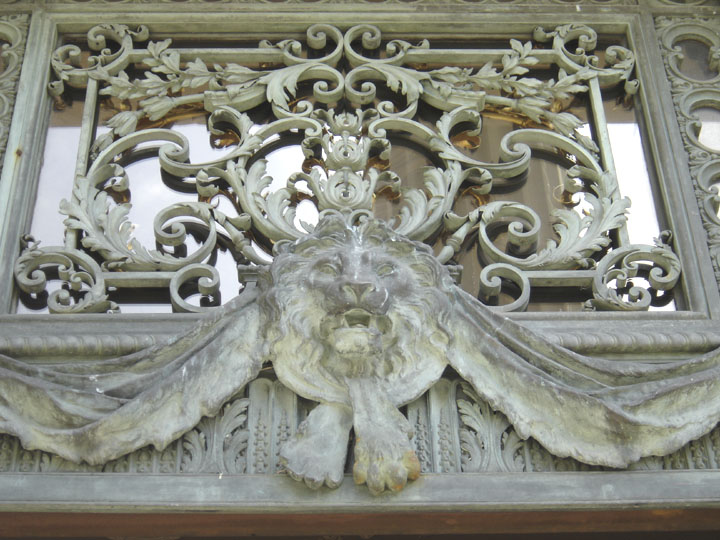
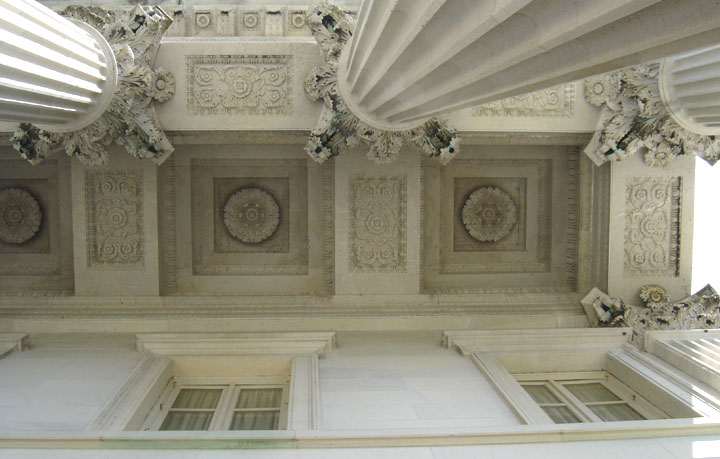
looking up at the entrance
The Vanderbilts had 3 children:
Consuelo, who became the 9th Duchess of Marlborough; William K., Jr., a
prominent figure in pioneering the sport of auto racing in America; and Harold,
one of the finest yachtsmen of his era who successfully defended the America's
Cup three times.
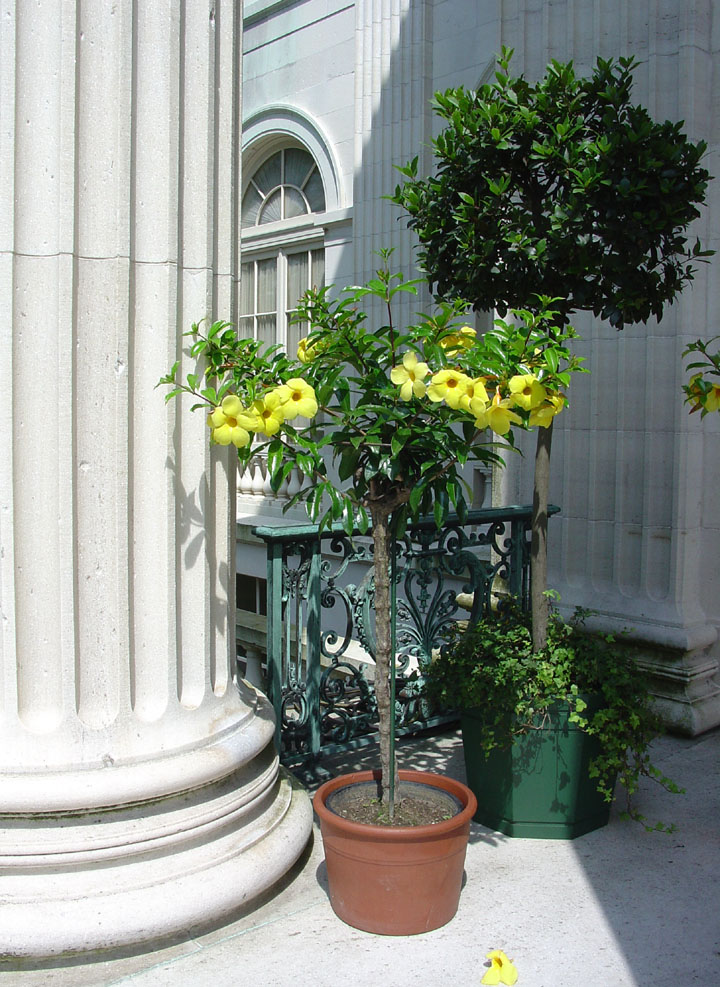
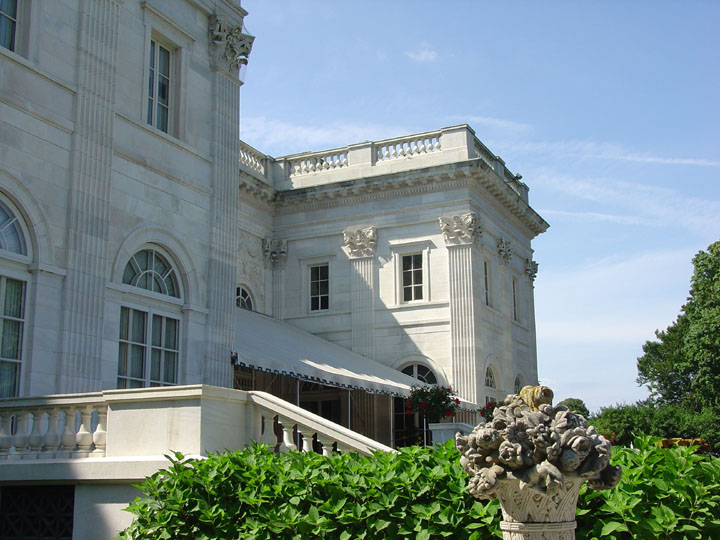
The Vanderbilts divorced in 1895 and
Alva married Oliver H.P. Belmont, moving down the street to Belcourt. After his
death, she reopened Marble House, and had a Chinese Tea House built on the
seaside cliffs, where she hosted rallies for women's right to vote. She sold the
house to Frederick H. Prince in 1932. The Preservation Society acquired the
house in 1963 from the Prince estate.
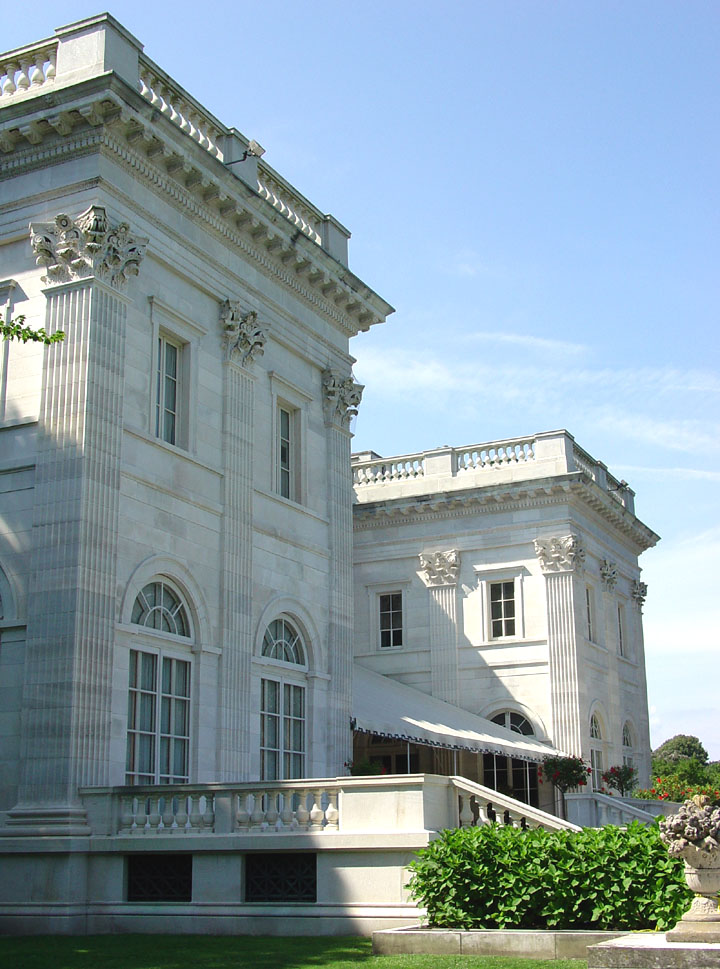
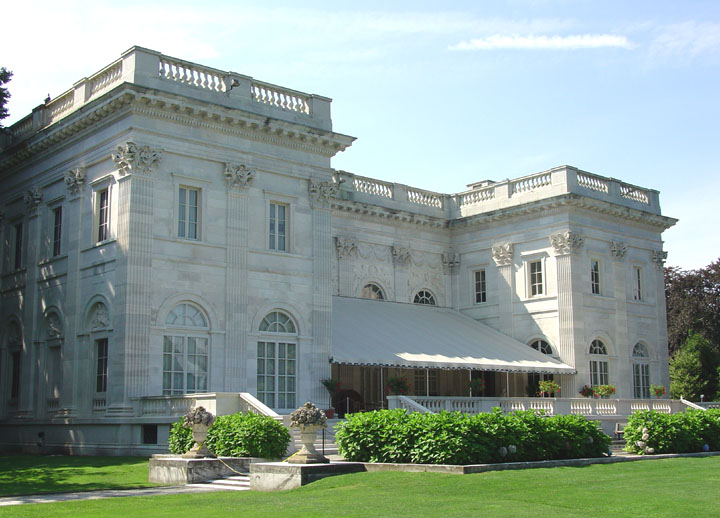
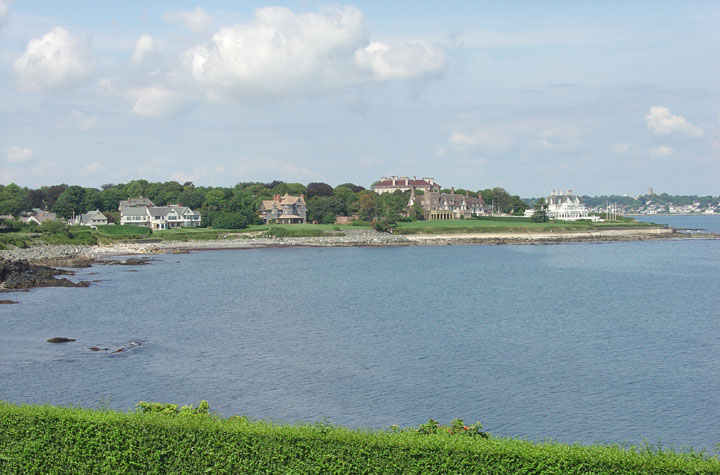
The Chinese Tea House
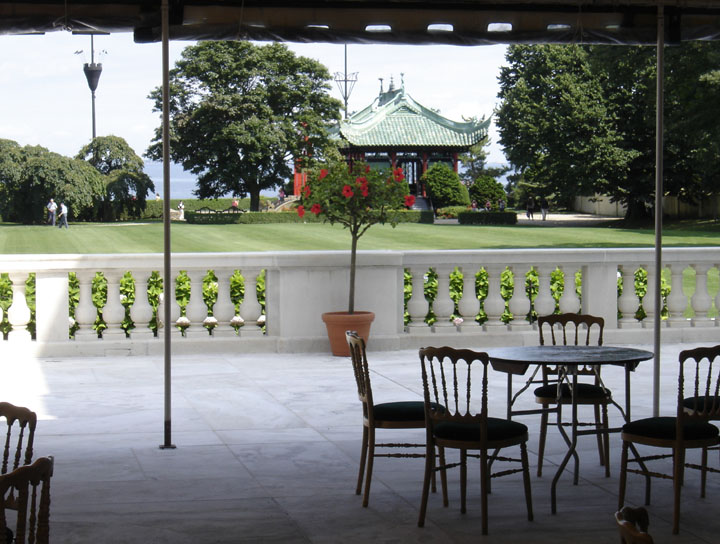
view from the Marble House porch
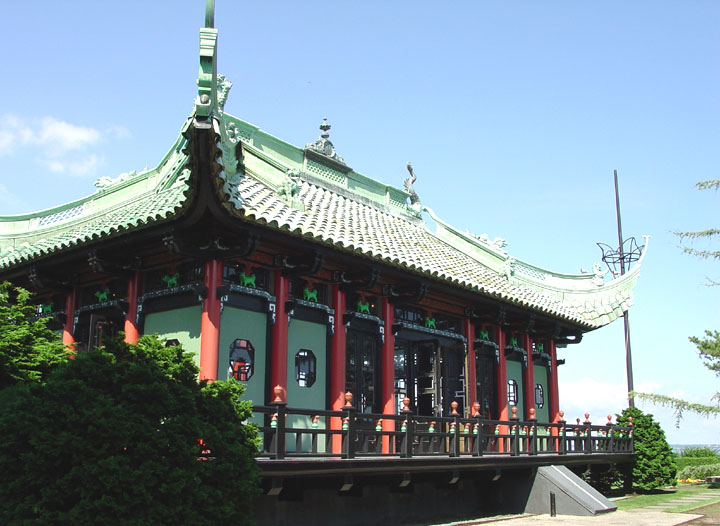
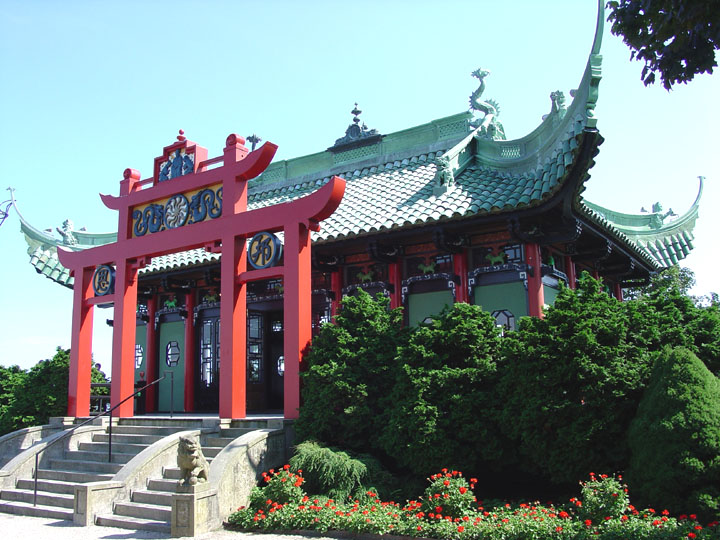
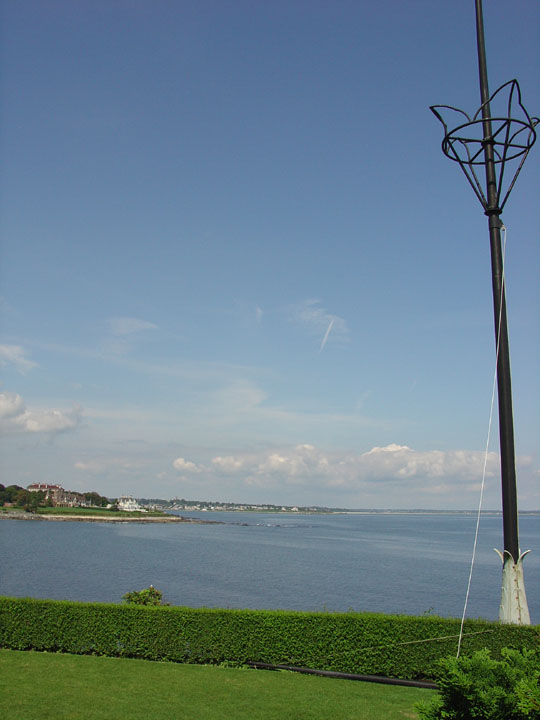
view from the tea house
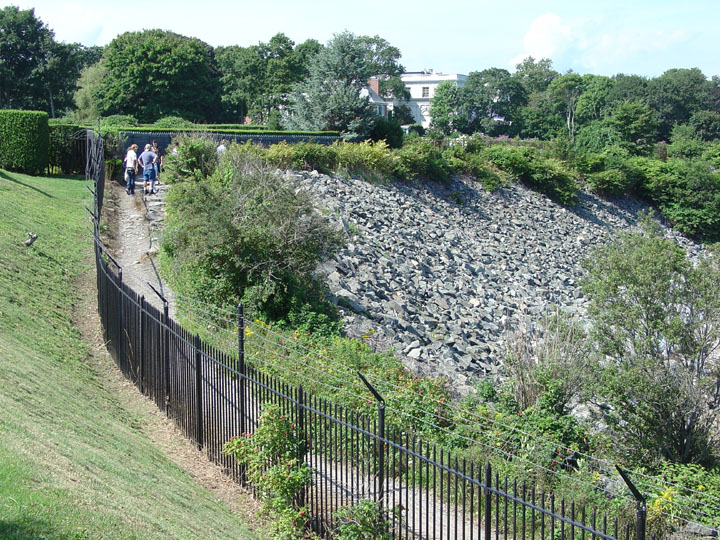
people walking the Cliff Walk
(on the water side of Marble House)